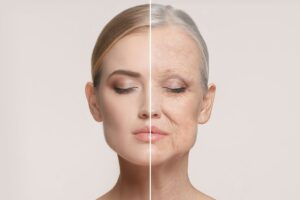a common question is when is the right age to start getting Botox and fillers? Is it better to start earlier as a preventative measure or wait until the wrinkles have already formed? In this article, we will explore the different ages to consider getting Botox and fillers and the benefits and risks of these cosmetic procedures.
What is preventative Botox and is it a good age to start?
What is preventative Botox?
Preventative Botox is a cosmetic procedure where Botox injections are used as a preventative measure to delay the onset of wrinkles and fine lines. It involves getting smaller doses of Botox injected into the muscles that cause dynamic wrinkles, caused by facial expressions such as frowning or squinting. By weakening these muscles, it reduces the repetitive movements that cause the wrinkles to develop in the first place.
Is it a good age to start preventative Botox?
Many experts suggest that the ideal time to start preventative Botox is in your late 20s to early 30s. This is the time when fine lines and wrinkles start to become more noticeable, and the earlier you start treatments, the better results you may achieve. Additionally, starting early can help establish good habits for taking care of your skin and prevent long-term damage from sun exposure, which can accelerate wrinkles.
What are the benefits of starting Botox at a younger age?
Starting Botox at a younger age can have several benefits. First, it can prevent wrinkles and fine lines from becoming deeper and more pronounced over time. Second, it can also promote healthy skin habits and early damage prevention. Finally, starting Botox early can result in a more natural and subtle appearance compared to those who start treatment after wrinkles and lines have already formed.
When is the best age to start getting Botox?
What age should I get my first Botox treatment?
The best age to start getting Botox is subjective and varies from person to person. While preventative Botox can be started in your late 20s to early 30s, many people don’t start until their mid-30s or early 40s when wrinkles and lines have become more noticeable. It ultimately depends on your personal preference and the appearance of wrinkles on your face.
When do most people start getting Botox?
Most people start getting Botox in their 30s and early 40s, but it’s becoming increasingly common for people to start in their 20s as a preventative measure. However, it’s important to consult with a licensed professional to determine the right time for you to start getting Botox.
What should I know before getting my first Botox treatment?
Before getting your first Botox treatment, it’s essential to research and consult with a licensed professional experienced with Botox injections. You should discuss your goals and expectations and review any health concerns or medications that may interfere with Botox treatment. Also, make sure to understand the approved uses and potential side effects of Botox.
How do Botox and Fillers work?

What is the difference between Botox and fillers?
The main difference between Botox and fillers is that Botox addresses wrinkles and fine lines caused by facial expressions, while fillers add volume to areas that have lost volume due to aging. Botox and fillers are often used together to achieve a more youthful appearance.
How does Botox work?
Botox works by blocking signals between nerves and muscles, preventing muscles from contracting. When muscles can’t contract, they relax, reducing the appearance of wrinkles caused by repetitive facial expressions such as frowning or squinting. The effects typically last from three to six months, and repeated treatments are necessary to maintain results.
How do fillers work?
Fillers work by adding volume to areas of the face that have lost volume due to aging. They are injected into specific areas of the face, such as the cheeks, lips, or nasolabial folds, to provide a plumper, more youthful look. Most fillers contain hyaluronic acid, which is a naturally occurring substance in the body that can hold up to 1000 times its weight in water.
What are the benefits of Botox and Fillers?
Can Botox help reduce wrinkles?
Yes, Botox can help reduce wrinkles caused by repetitive facial expressions. Botox injections can relax muscles in the face, which can delay the onset and reduce the appearance of wrinkles.
What are dermal fillers, and how can they help?
Dermal fillers can help add volume to areas of the face that have lost volume due to aging. They provide a plumper, more youthful look and can last from six months to two years, depending on the type of filler used.
How long do Botox results typically last?
The effects of Botox typically last from three to six months. However, the duration can vary from person to person, depending on the strength of muscles and the amount of Botox used.
Conclusion
While there is no definitive answer to when is the right age to start getting Botox and fillers, it’s essential to consider the benefits and risks of each procedure. Starting earlier with preventative Botox can delay the onset of wrinkles and promote healthy skin habits, but it’s also crucial to understand the potential risks and side effects of Botox and fillers. Consultation with a licensed professional is key to determining the best age and approach for achieving your cosmetic goals.



